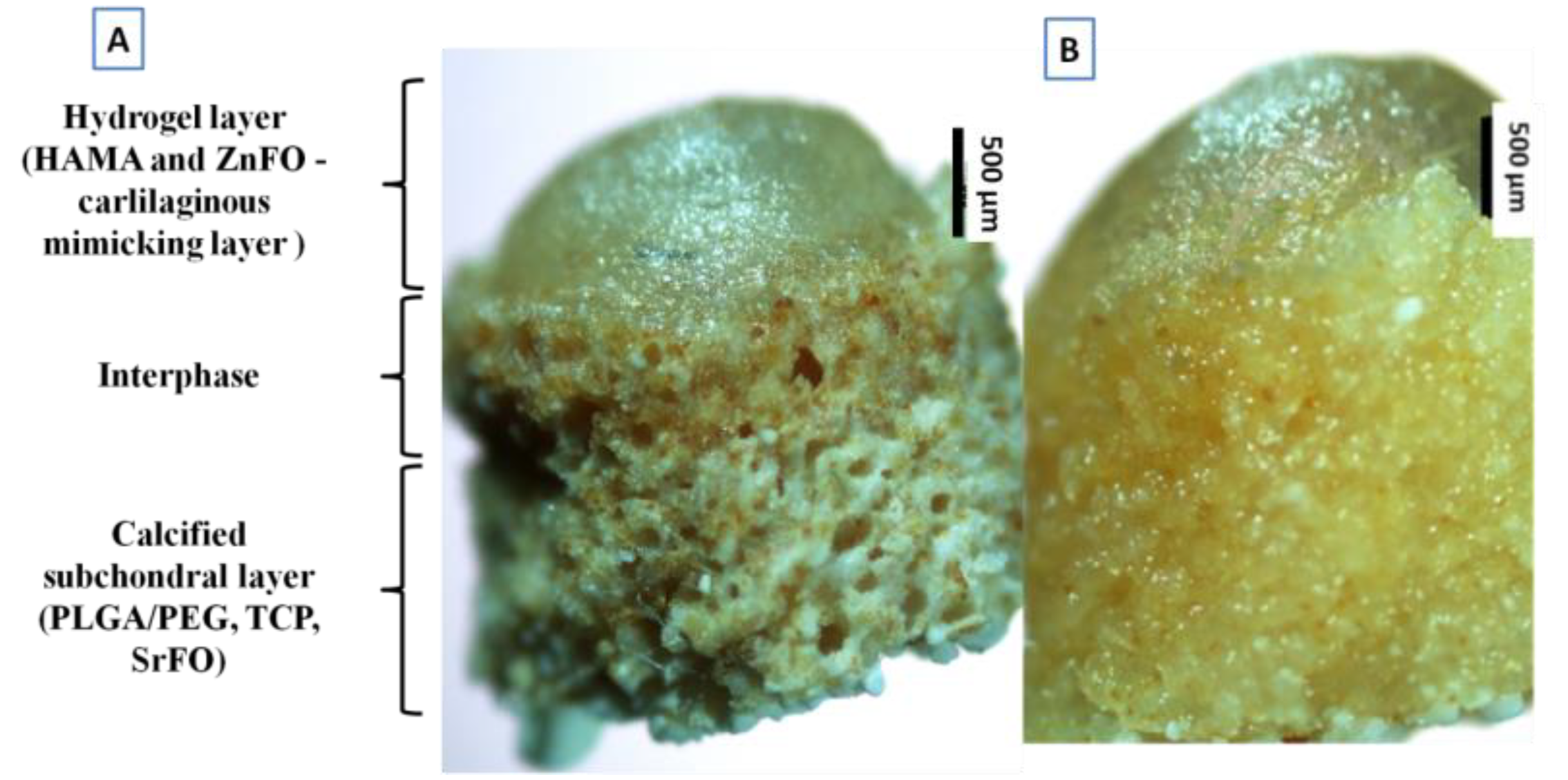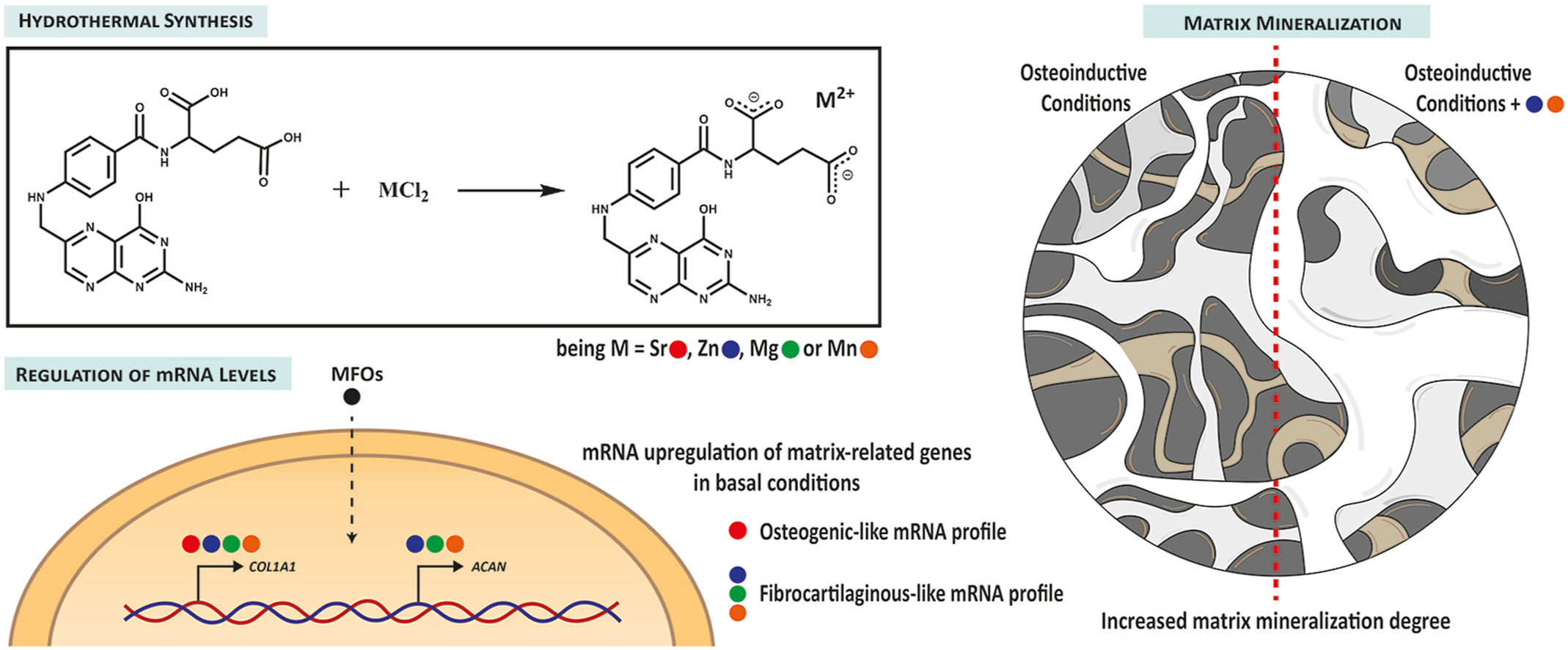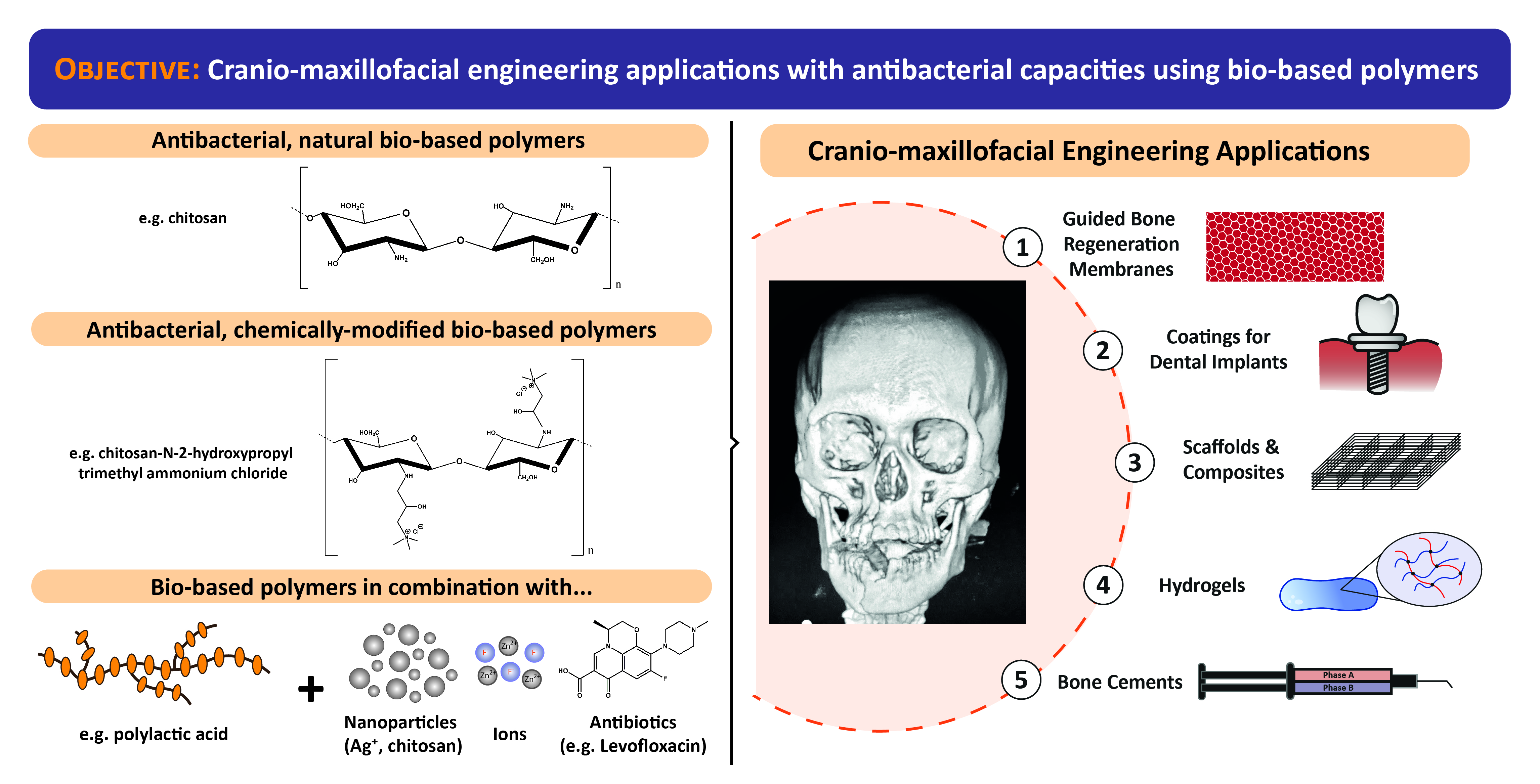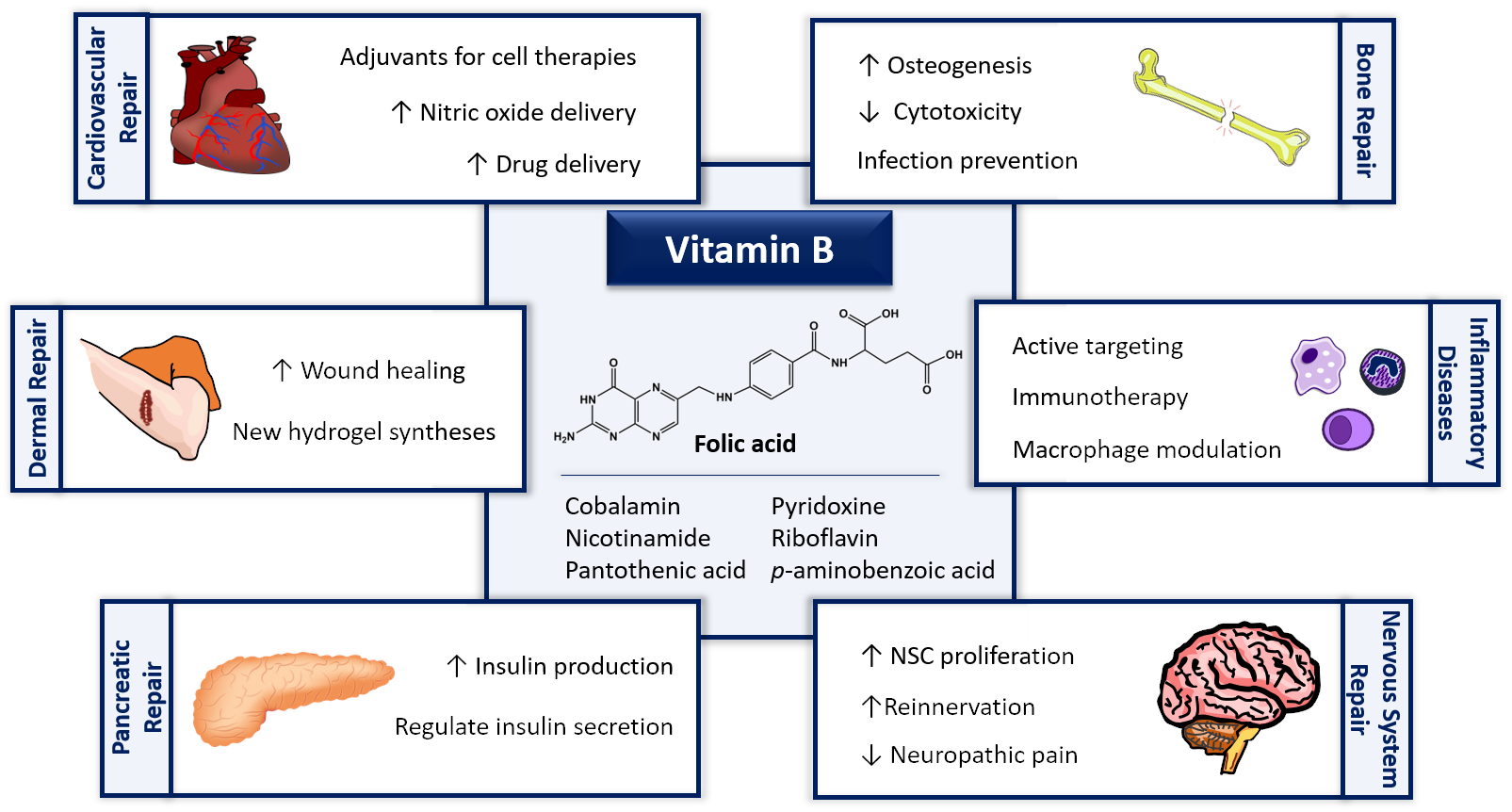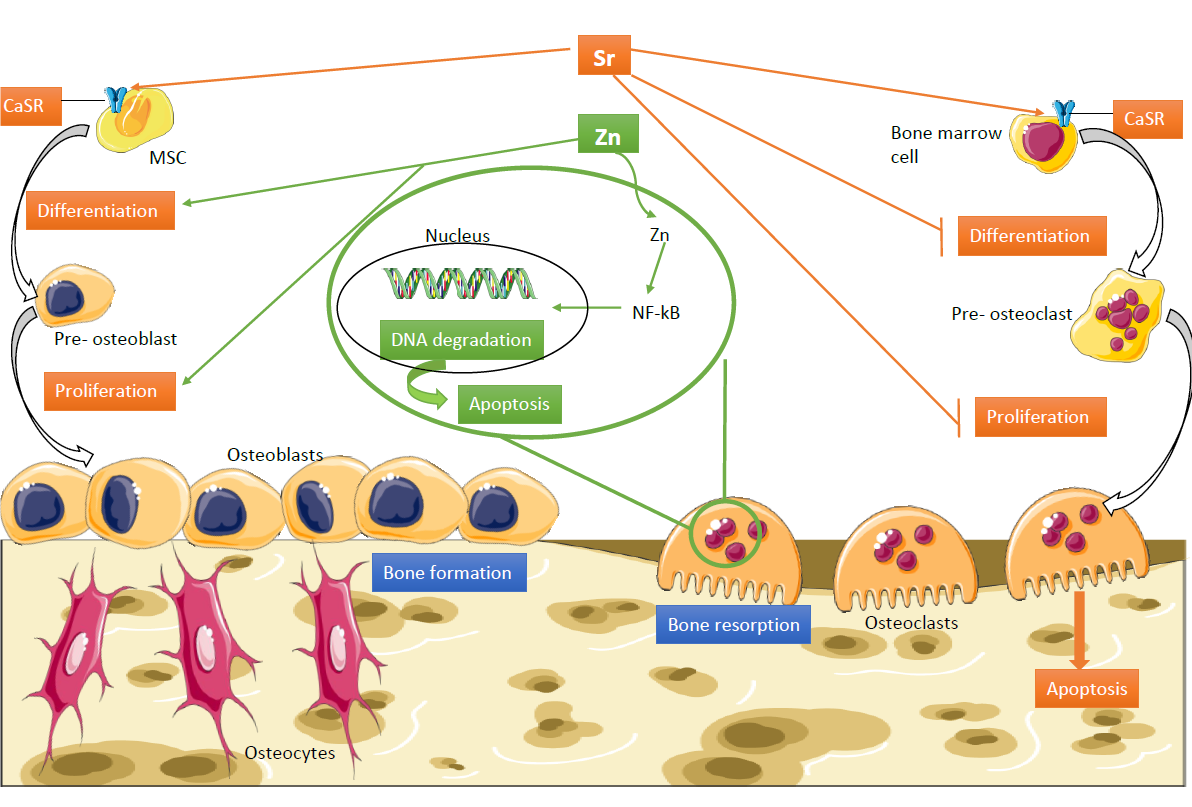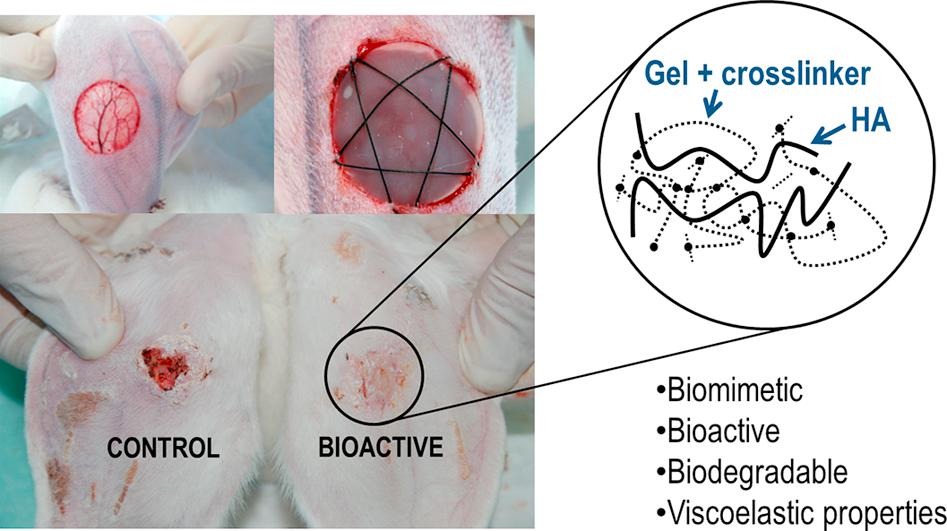Regenerative therapies based on tissue engineering are becoming the most promising alternative for the treatment of osteoarthritis and rheumatoid arthritis. However, regeneration of full-thickness articular osteochondral defects that reproduces the complexity of native cartilage and osteochondral interface still remains challenging. Hence, in this work, we present the fabrication, physic-chemical characterization, and in vitro and in vivo evaluation of biomimetic hierarchical scaffolds that mimic both the spatial organization and composition of cartilage and the osteochondral interface. The scaffold is composed of a composite porous support obtained by cryopolymerization of poly(ethylene glycol) dimethacrylate (PEGDMA) in the presence of biodegradable poly(D,L-lactide-co-glycolide) (PLGA), bioactive tricalcium phosphate β-TCP and the bone promoting strontium folate (SrFO), with a gradient biomimetic photo-polymerized methacrylated hyaluronic acid (HAMA) based hydrogel containing the bioactive zinc folic acid derivative (ZnFO). Microscopical analysis of hierarchical scaffolds showed an open interconnected porous open microstructure and the in vitro behaviour results indicated high swelling capacity with a sustained degradation rate. In vitro release studies during 3 weeks indicated the sustained leaching of bioactive compounds, i.e., Sr2+, Zn2+ and folic acid, within a biologically active range without negative effects on human osteoblast cells (hOBs) and human articular cartilage cells (hACs) cultures. In vitro co-cultures of hOBs and hACs revealed guided cell colonization and proliferation according to the matrix microstructure and composition. In vivo rabbit-condyle experiments in a critical-sized defect model showed the ability of the biomimetic scaffold to promote the regeneration of cartilage-like tissue over the scaffold and neoformation of osteochondral tissue
Vitamin B9 derivatives as carriers of bioactive cations for musculoskeletal regeneration applications: Synthesis, characterization and biological evaluation
The development of new drugs for musculoskeletal regeneration purposes has attracted much attention in the last decades. In this work, we present three novel vitamin B9 (folic acid)-derivatives bearing divalent cations (ZnFO, MgFO and MnFO), providing their synthesis mechanism and physicochemical characterization. In addition, a strong emphasis has been placed on evaluating their biological properties (along with our previously reported SrFO) using human mesenchymal stem cells (hMSC). In all the cases, pure folate derivatives (MFOs) with a bidentate coordination mode between the metal and the folate anion, and a 1:1 stoichiometry, were obtained in high yields. A non-cytotoxic dose of all the MFOs (50 μg/mL) was demonstrated to modulate by their own the mRNA profiles towards osteogenic-like or fibrocartilaginous-like phenotypes in basal conditions. Moreover, ZnFO increased the alkaline phosphatase activity in basal conditions, while both ZnFO and MnFO increased the matrix mineralization degree in osteoinductive conditions. Thus, we have demonstrated the bioactivity of these novel compounds and the suitability to further studied them in vivo for musculoskeletal regeneration applications.
Antibacterial Bio-Based Polymers for Cranio-Maxillofacial Regeneration Applications
Cranio-maxillofacial structure is a region of particular interest in the field of regenerative medicine due to both its anatomical complexity and the numerous abnormalities affecting this area. However, this anatomical complexity is what makes possible the coexistence of different microbial ecosystems in the oral cavity and the maxillofacial region, contributing to the increased risk of bacterial infections. In this regard, different materials have been used for their application in this field. These materials can be obtained from natural and renewable feedstocks, or by synthetic routes with desired mechanical properties, biocompatibility and antimicrobial activity. Hence, in this review, we have focused on bio-based polymers which, by their own nature, by chemical modifications of their structure, or by their combination with other elements, provide a useful antibacterial activity as well as the suitable conditions for cranio-maxillofacial tissue regeneration. This approach has not been reviewed previously, and we have specifically arranged the content of this article according to the resulting material and its corresponding application; we review guided bone regeneration membranes, bone cements and devices and scaffolds for both soft and hard maxillofacial tissue regeneration, including hybrid scaffolds, dental implants, hydrogels and composites.
Tissue Engineering therapies based on folic acid and other vitamin B derivatives. Functional mechanisms and current applications in Regenerative Medicine.
B-vitamins are a group of soluble vitamins which are cofactors of some of the enzymes involved in the metabolic pathways of carbohydrates, fats and proteins. These compounds participate in a number of functions as cardiovascular, brain or nervous systems. Folic acid is described as an accessible and multifunctional niche component that can be used safely, even combined with other compounds, which gives it high versatility. Also, due to its non-toxicity and great stability, folic acid has attracted much attention from researchers in the biomedical and bioengineering area, with an increasing number of works directed at using folic acid and its derivatives in tissue engineering therapies as well as regenerative medicine. Thus, this review provides an updated discussion about the most relevant advances achieved during the last five years, where folic acid and other vitamins B have been used as key bioactive compounds for enhancing the effectiveness of biomaterials’ performance and biological functions for the regeneration of tissues and organs.
1.Fernández-Villa, D., Jiménez Gómez-Lavín, M., Abradelo, C., San Román, J. & Rojo, L. Tissue Engineering Therapies Based on Folic Acid and Other Vitamin B Derivatives. Functional Mechanisms and Current Applications in Regenerative Medicine. Int J Mol Sci 19, (2018). Cite
Bibliographic review on the state of the art of strontium and zinc based regenerative therapies. Recent developments and clinical applications
This review brings up to date the state of the art of strontium and zinc based regenerative therapies, both having a promoting effect on tissue formation and a role inhibiting resorption in musculoskeletal disorders.
1.Jiménez, M., Abradelo, C., Román, J. S. & Rojo, L. Bibliographic review on the state of the art of strontium and zinc based regenerative therapies. Recent developments and clinical applications. J. Mater. Chem. B (2019) http://doi.org/10.1039/C8TB02738B. Cite
Contribution of bioactive hyaluronic acid and gelatin to regenerative medicine. Methodologies of gels preparation and advanced applications
The functionality and reactivity of polysaccharides, and in particular hyaluronic acid, in combination with proteins like gelatin, collagen and many others, offer very interesting opportunities for the new trends in regenerative medicine. In this review is described the relevance of gelatin (Gel) and hyaluronic acid (HA) biopolymers in the field of tissue engineering due to the excellent response of these biomimetic materials and their bioactive and biodegradable character in the human body. In addition, it is reported an overview of the most relevant crosslinking processes and agents that are being developed for regenerative medicine, including different hydrogel modifications as well as several interesting and advanced applications. The growing of clinical applications of these macromolecular components as assemblies opens new and advanced opportunities in regenerative medicine and drug delivery fields.
Free download until 16.12.2017: https://authors.elsevier.com/c/1VyP~3GBFCik9

